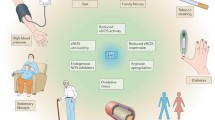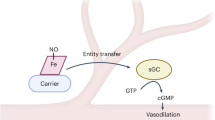Abstract
A growing appreciation of the involvement of nitric oxide (NO) in numerous bioregulatory pathways has not only opened up new therapeutic avenues for organic nitrates and other NO donors but also led to an increased use of such compounds in pharmacological studies. By definition, all NO donors produce NO-related activity when applied to biological systems and are thus principally suited to either mimic an endogenous NO-related response or substitute for an endogenous NO deficiency. However, the pathways leading to enzymatic and/or non-enzymatic formation of NO differ greatly among individual compound classes, as do their chemical reactivities and kinetics of NO release. Moreover, since the reaction of NO with oxygen is a function of its concentration, the same absolute amounts of NO generated over different periods of time may lead to substantially different rates of NOx formation and, consequently, to varying extents of side reactions, such as nitration and/or nitrosation of biomolecules. Matters are further complicated by compound-specific formation of by-products, which may arise during decomposition or metabolism, sometimes in amounts far exceeding those of NO. The term “NO donor” implies that the compound releases the active mediator, NO. Ultimately, this may be true for many different chemical classes of compound, since the principal NO-related species generated may be converted to NO, if not directly released as such. However, in a biological system, the redox form of nitrogen monoxide (NO+, NO· or NO–) that is actually released makes a substantial difference to the NO donor’s reactivity towards other biomolecules, the profile of by-products, and the bioresponse. Such considerations are likely to account for much of the discrepancy in experimental results obtained using the same cell or tissue preparation but different NO mimetics. Thus, compound selection is not a trivial issue and the investigator should be aware of the key properties and differences between various NO donor classes in order to avoid misinterpretation of experimental results.
Similar content being viewed by others
Author information
Authors and Affiliations
Rights and permissions
About this article
Cite this article
Feelisch, M. The use of nitric oxide donors in pharmacological studies. Naunyn-Schmiedeberg's Arch Pharmacol 358, 113–122 (1998). https://doi.org/10.1007/PL00005231
Issue Date:
DOI: https://doi.org/10.1007/PL00005231




